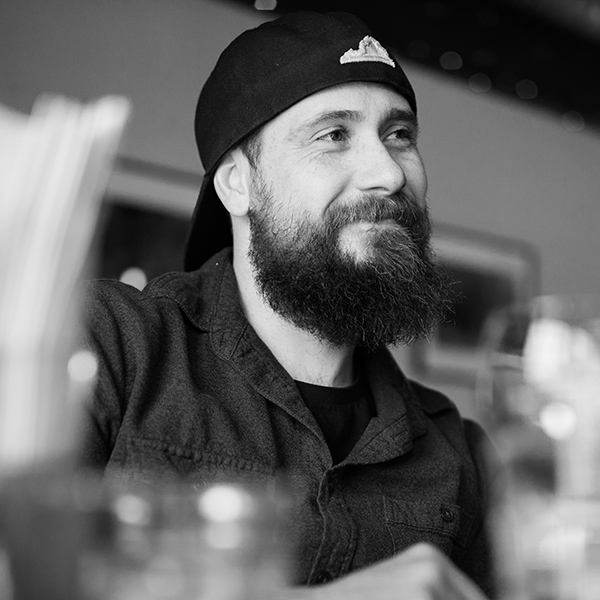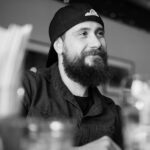Commerical Photography Image Editing
A few weeks ago a good friend of mine, previous student and accomplished photographer Kyle Ford provided me with an image from a commercial photography shoot with Vivint. Kyle is their Photography Manager and is responsible for all the images produced for and behalf of the company. Based out of Salt Lake City, Kyle and Vivint are producing some excellent work – and I highly suggest checking out their respective websites Kylesford.com and vivint.com.
I approached Kyle and asked for his permission to run his image through my own image editing process. Additionally, I wanted to test out a few popular editing software programs used in the professional photography industry. Kyle graciously agreed, and I embarked on evaluating the effectiveness and value of these two programs. Personally, I found it intriguing to work with an image that was not my own, as it allowed me to approach the editing process with fresh perspective. Usually, when I capture photos, I am aware of the post-processing needs and shoot accordingly. However, with Kyle’s image, I did not have that advantage.
Firstly, it is important to clarify that this is not intended to be a “how to” guide or a compilation of image editing tips and tricks. Instead, what follows is a firsthand account of my experience using each of these programs. The first and primary software of this discussion is Lumenzia. Created by Greg Benz, Lumenzia is, in the most simple sense, a luminosity masking software. Meaning, it aids in creating advanced selections based on color range and/or tonal range. But it can also help with things like: edge masks creation, non-destructive sharpening, vignette editing (both creating them and eliminating them), and exposure blending.
Lumenzia is a plug in and will run you $30-$40. It is worth mentioning that I have been using Photoshop for a significant period of time. While I don’t claim to be the ultimate authority on the subject, this experience has allowed me to develop my own methods and workflows over the past 25 years, which have proven effective for me. As a result, I sometimes find it challenging to fully appreciate the value of new editing methodologies or trends in the field of photographic editing. So at first, it first it seemed like Lumenzia was just a panel that allowed one to make masks in ways I’ve done before. Such as Select > Color Range as an example.
Admittedly, after playing with it for a day, my initial assessment was wrong and it did not take long to recognize the value of this plugin. After using Lumenzia, it was quickly identifiable that it is more powerful that I assumed. Also its use would result in drastically streamlining my process for editing architecture and interiors – not replacing it, but working in concert along side it.
To get to the goods, below is my before and after.
Speed & Efficiency When Editing Architectural Images
To be honest, I did not have to do much to Kyle’s image. He shot it on a Phase One IQ3 with a Schneider Kreuznach set to 40mm, ISO 500, F/5.6 @ 1 second. The base exposure allowed me to very quickly previsualize the edits I wanted to make. I knew I needed to tone down the saturation of incandescent lights with the lowest Kelvin temps. Also, I wanted the sky to have a bit more life to it. Greens also needed a pop and the white façade of the garage needed color balancing. Lastly, I wanted to darken the metal facing of the center of the home while maintaining detail and proper overall contrast.
Knowing my own process, a few of those things would be tricky. Particularly the meeting point of the black metal wall, the tree and the white garage as they all needed different edits. Lumenzia made quick work of developing and refining a selection of each allowing me to make a very natural edit despite pushing color and dynamic range.
What really took me by surprise is just how easily it was to integrate into my own process – everything was simply intuitive. By making advanced luminosity based selections I was able to make everything from sweeping changes to delicate brush work with ease. Long story short, Lumenzia is a great buy and something I will be using regularly from here on out.
Side note: This file is huge. Luminosity masks are known to increase file size, but starting with something already this large ramped up to 2 GB in an instant. As a result and in an effort to spare the strain on my poor computer, I saved my color centric edits as a PSB file and exported a flattened file to work on my retouching centric edits. While not optimal in terms of workflow it was a necessity at this point in time. My Macbook Pro gave up the ghost and I can’t be without a functional machine so my PC is getting babied until a replacement arrives.
AI Based Software
As mentioned previously many image editing trends have come and gone over the years. Does anyone remember the days of trying to replicate Jim Fiscus’s work in the 2000’s? (cmd-J, Filter>Other>High Pass, Crank past outlines till it’s 3d looking, Blend Mode to Soft or Hard Light.. It’s not perfect, but that was about as close as I ever got). In any case, I’ve been eager to try some of Topaz Labs’ software since hearing about what they can do and seeing some of the results. Initially my curiosity was centered around their Sharpen AI. Who wouldn’t love to fix slight camera shake or bump of the tripod? However, they also offer a DeNoise AI which promised to be helpful as well so I downloaded a trial of both. At a whopping 3.7 GB each, the download time was enough for me to really get my hopes up in anticipation of their potential.
While editing the image from the Phase One, somewhere between the shutter speed and 500 ISO there is considerable noise to this image. Since I was most excited to try Sharpen AI I ran the file through it first. The interface felt a bit clumsy and changed made to the sliders seem to make less of a difference than selecting their pre-sets for specific challenges. Maybe it was just that this file didn’t really need much sharpening. But in the end I didn’t feel as though it developed anything worth keeping.
DeNoise AI on the other hand was quite useful. It could be because this image had some serious noise to begin with. Regardless DeNoise handled the grain with ease. In fact, since noise and sharpening tend to go hand in hand, sharpening is a option within DeNoise AI and I found it to be more controllable than the standalone suite. With both programs the interface is surprisingly simple with little options to fool around with. In the end I think DeNoise is worth the $80 or so it costs but I personally would not pay for the the Sharpen AI.
Below is a comparison zoomed in to 100%. The first is the original and the second has been run through DeNoise AI.

Hi! I'm Bradley Phillips
